Modeling the Thermal Conductivity Inhomogeneities of Injection-Molded Particle-Filled Composites, Caused by Segregation
Abstract
1. Introduction
2. Materials and Methods
2.1. Materials
2.2. The Preparation of the Samples
2.3. The Investigation of Segregation
2.4. The Measurement of Thermal Conductivity
3. Results and Discussion
3.1. Morphological Investigation
3.2. Model for the Segregation of Glass Beads
3.3. Thermal Conductivity of the Samples
3.4. Developing a Model for Segregation
- λ’m = 0.25 W/mK
- ϕmax = 63%
- C = 1.12
4. Conclusions
Author Contributions
Funding
Acknowledgments
Conflicts of Interest
References
- Xanthos, M. Functional fillers for plastics, 2nd ed.; Wiley-VCH: Weinheim, Germany, 2010. [Google Scholar]
- Ariffin, A.; Mansor, A.S.; Jikan, S.S.; Mohd Ishak, Z.A. Evaluation of hybridizing talc and surface-treated kaolin on the propertiesof PP hybrid composites. J. Reinf. Plast. Comp. 2010, 29, 3429–3441. [Google Scholar] [CrossRef]
- Dulebova, L.; Garbacz, T. The effect of particulate fillers on hardness of polymer composite. Adv. Sci. Technol. Res. J. 2017, 11, 66–71. [Google Scholar]
- Fu, S.-Y.; Lauke, B.; Mai, Y.-W. Science and Engineering of Short Fibre Reinforced Polymer Composites; Woodhead Publishing: Cambridge, UK, 2009. [Google Scholar]
- Hegler, R.P.; Mennig, G. Phase separation effects in processing of glass-bead and glass-fiber-filled thermoplastics by injection molding. Polom. Eng. Sci. 1985, 25, 395–405. [Google Scholar] [CrossRef]
- Hegler, R.P.; Mennig, G.; Schmauch, C. Phase separation effects in processing of glass-bead- and glass-fiber-filled thermoplastics by injection molding. Adv. Polym. Tech. 1987, 7, 3–20. [Google Scholar] [CrossRef]
- Lebedev, S.M. Evaluation of electric, morphological and thermal properties of thermally conductive polymer composites. Appl. Therm. Eng. 2015, 91, 875–882. [Google Scholar] [CrossRef]
- Chen, H.; Ginzburg, V. Thermal conductivity of polymer-based composites Fundamentals and applications. Prog. Polym. Sci. 2016, 59, 41–85. [Google Scholar] [CrossRef]
- Lv, W.; Sultana, S.; Rohskopf, A.; Kalaitzidou, K.; Henry, A. Graphite-high density polyethylene laminated composites with high thermal conductivity made by filament winding. Express Polym. Lett. 2018, 12, 215–226. [Google Scholar] [CrossRef]
- Han, Z.; Fina, A. Thermal Conductivity of Carbon Nanotubes and their Polymer Nanocomposites: A Review. Prog. Polym. Sci. 2011, 36, 914–944. [Google Scholar] [CrossRef]
- Hu, M.; Yu, D.; Wei, J. Thermal conductivity determination of small polymer samples by differential scanning calorimetry. Polym. Test. 2007, 26, 333–337. [Google Scholar] [CrossRef]
- Gumede, T.P.; Luyt, A.S.; Müller, A.J. Review on PCL, PBS, and PCL/PBS blends containing carbon nanotubes. Express Polym. Lett. 2018, 12, 505–529. [Google Scholar] [CrossRef]
- Xue, Y.; Li, X.; Wang, H.; Zhao, F.; Zhang, D.; Chen, Y. Improvement in thermal conductivity of through-plane aligned boron nitride/silicone rubber composites. Mater. Design 2019. [CrossRef]
- Cengel, Y.A. Heat Transfer: A Practical Approach; McGraw-Hill: New York, NY, USA, 2003. [Google Scholar]
- Wypych, G. Handbook of Fillers: Physical Properties of Fillers and Filled Materials; ChemTec Publishing: Toronto, ON, Canada, 2000. [Google Scholar]
- King, J.A.; Barton, R.L.; Hauser, R.A.; Keith, J.M. Synergistic effects of carbon fillers in electrically and thermally conductive liquid crystal polymer based resins. Polym. Compos. 2008, 29, 421–428. [Google Scholar] [CrossRef]
- Zsíros, L.; Kovács, J.G. Surface Homogeneity of Injection Molded Parts. Period. Polytech. Mech. Eng. 2018, 62, 284–291. [Google Scholar] [CrossRef]
- Török, D.; Kovács, J.G. Effects of Injection Molding Screw Tips on Polymer Mixing. Period. Polytech. Mech. Eng. 2018, 62, 241–246. [Google Scholar] [CrossRef]
- Karger-Kocsis, J. Polypropylene Structure, Blends and Composites; Springer: Berlin, Germany, 1995; Volume 3 Composites. [Google Scholar]
- Papathanasiou, T.D.; Ogadhoh, S.O. Inhomogeneous phase distribution in injection moulded glass-filled polystyrene. Scr. Metall. Mater. 1995, 33, 1133–1138. [Google Scholar] [CrossRef]
- Ogadhoh, S.O.; Papathanasiou, T.D. Particle rearrangement during processing of glass-reinforced polystyrene by injection moulding. Compos. Part A Appl. Sci. Manuf. 2007, 26, 1729–1741. [Google Scholar] [CrossRef]
- Kovács, J.G. Shrinkage alteration induced by segregation of glass beads in injection molded PA6: experimental analysis and modeling. Polym. Eng. Sci. 2011, 51, 2517–2525. [Google Scholar] [CrossRef]
- Sadabadi, H.; Ghasemi, M. Effects of Some Injection Molding ProcessParameters on Fiber Orientation Tensor of ShortGlass Fiber Polystyrene Composites (SGF/PS). J. Reinf. Plast. Compos. 2007, 26, 1729–1741. [Google Scholar] [CrossRef]
- Kovacs, J.G.; Suplicz, A. Thermally conductive polymer compounds for injection moulding: The synergetic effect of hexagonal boron-nitride and talc. J. Reinf. Plast. Compos. 2013, 32, 1234–1240. [Google Scholar] [CrossRef]
- Suplicz, A.; Hargitai, H.; Kovacs, J.G. Methodology development for through-plane thermal conductivity prediction of composites. Int. J. Therm. Sci. 2016, 100, 54–59. [Google Scholar] [CrossRef]
- Young, H.D.; Freedman, R.A. University Physics with Modern Physics, 13th ed.; Pearson Education: London, UK, 2012. [Google Scholar]
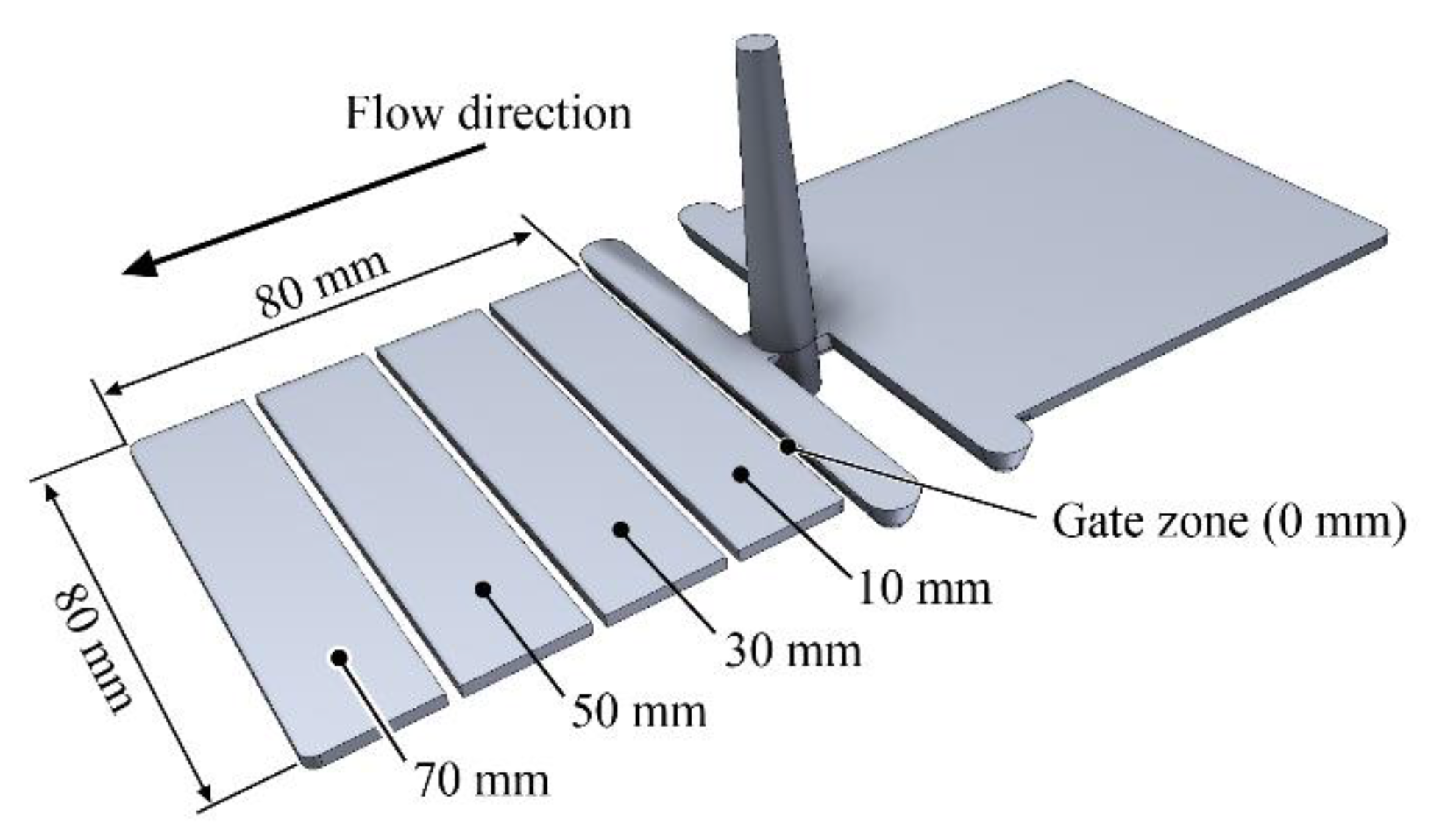
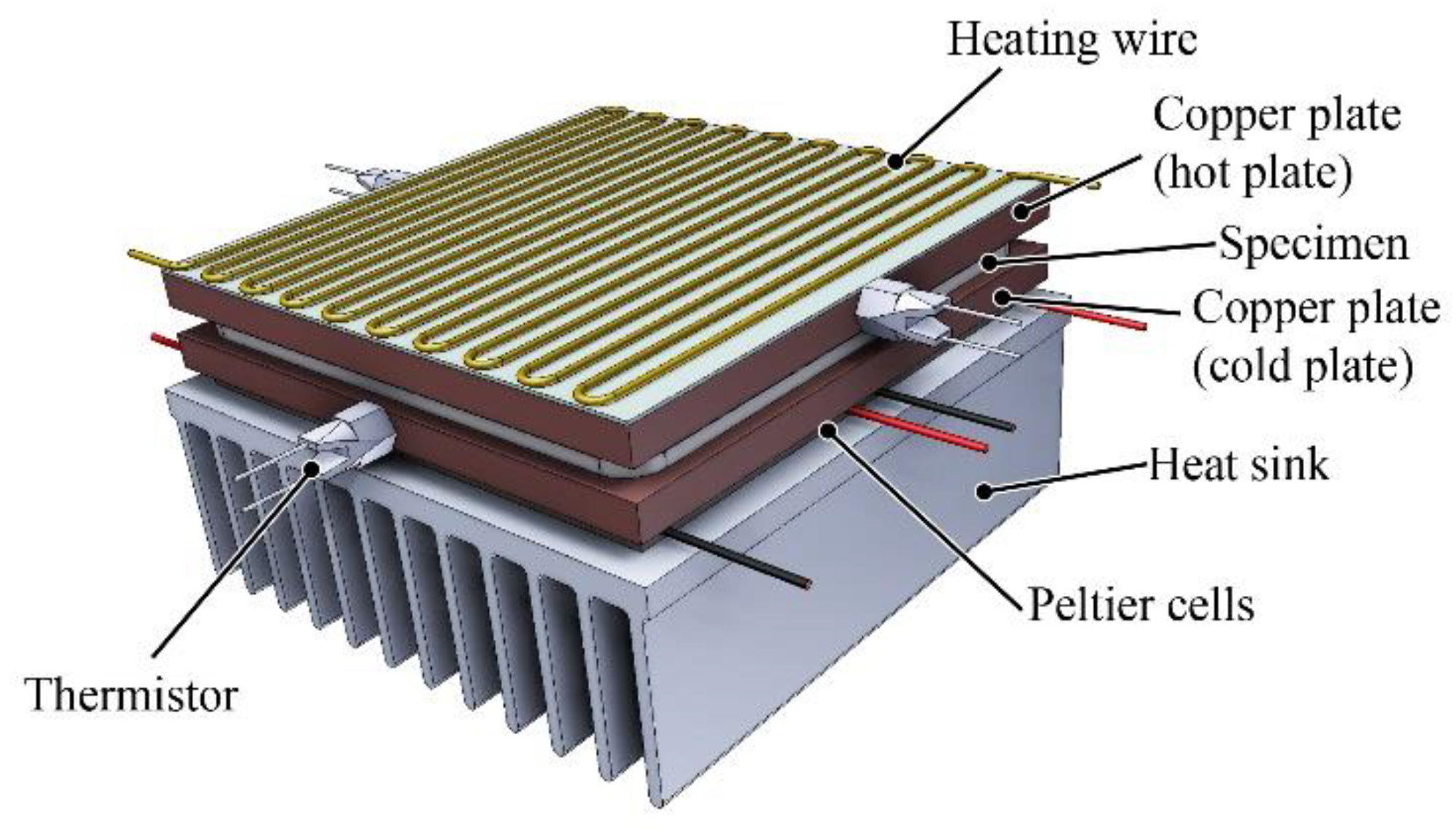
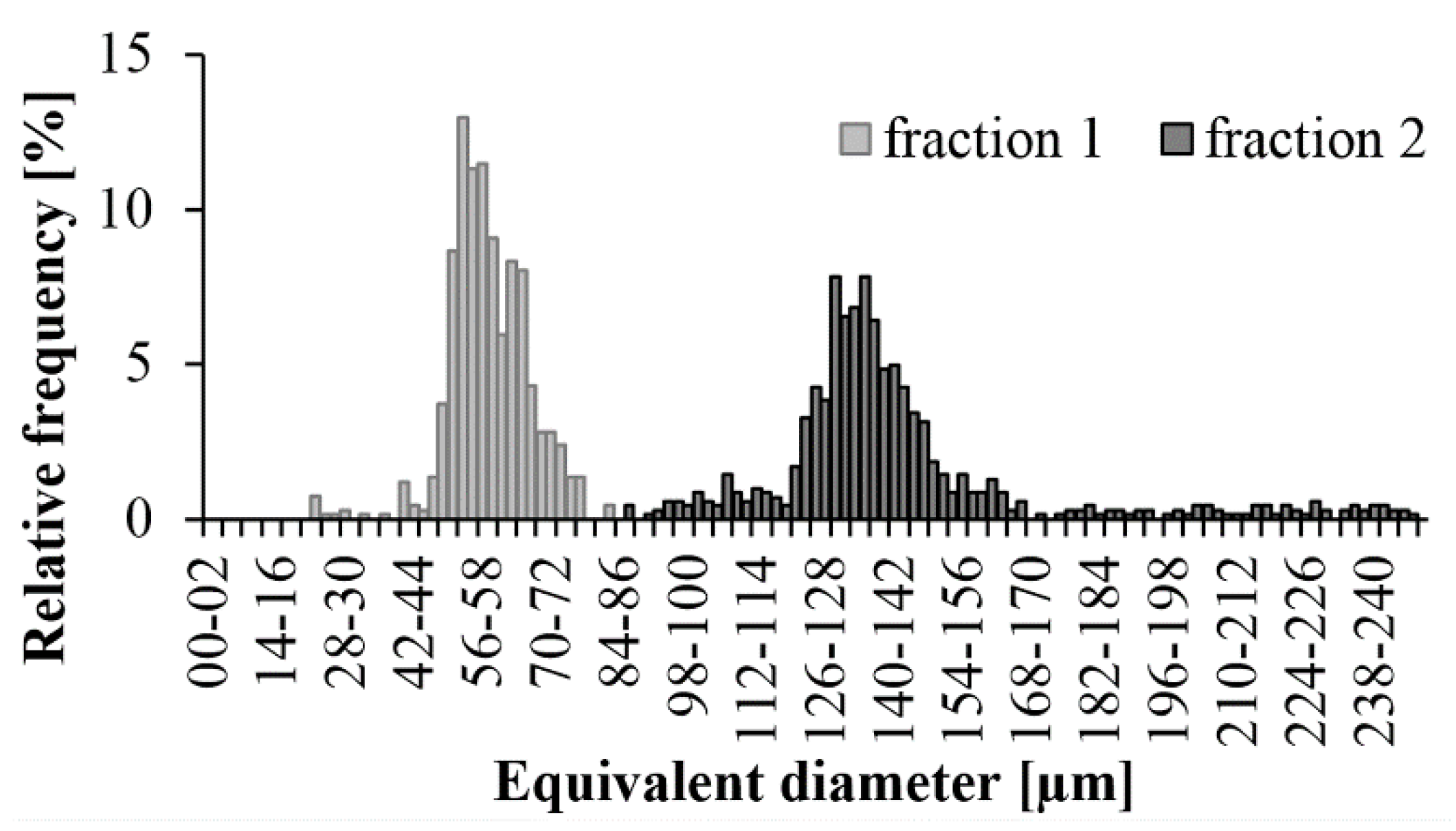

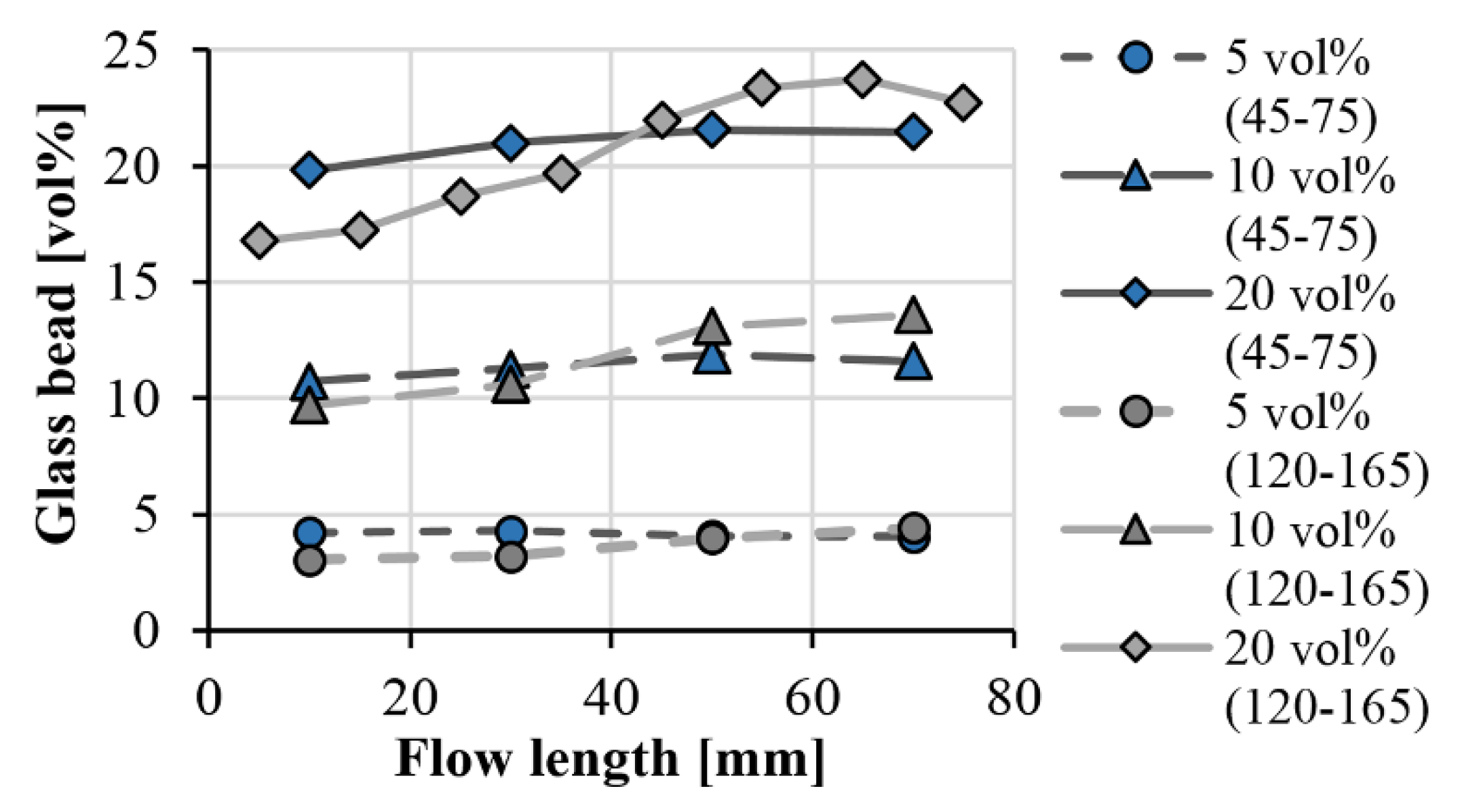

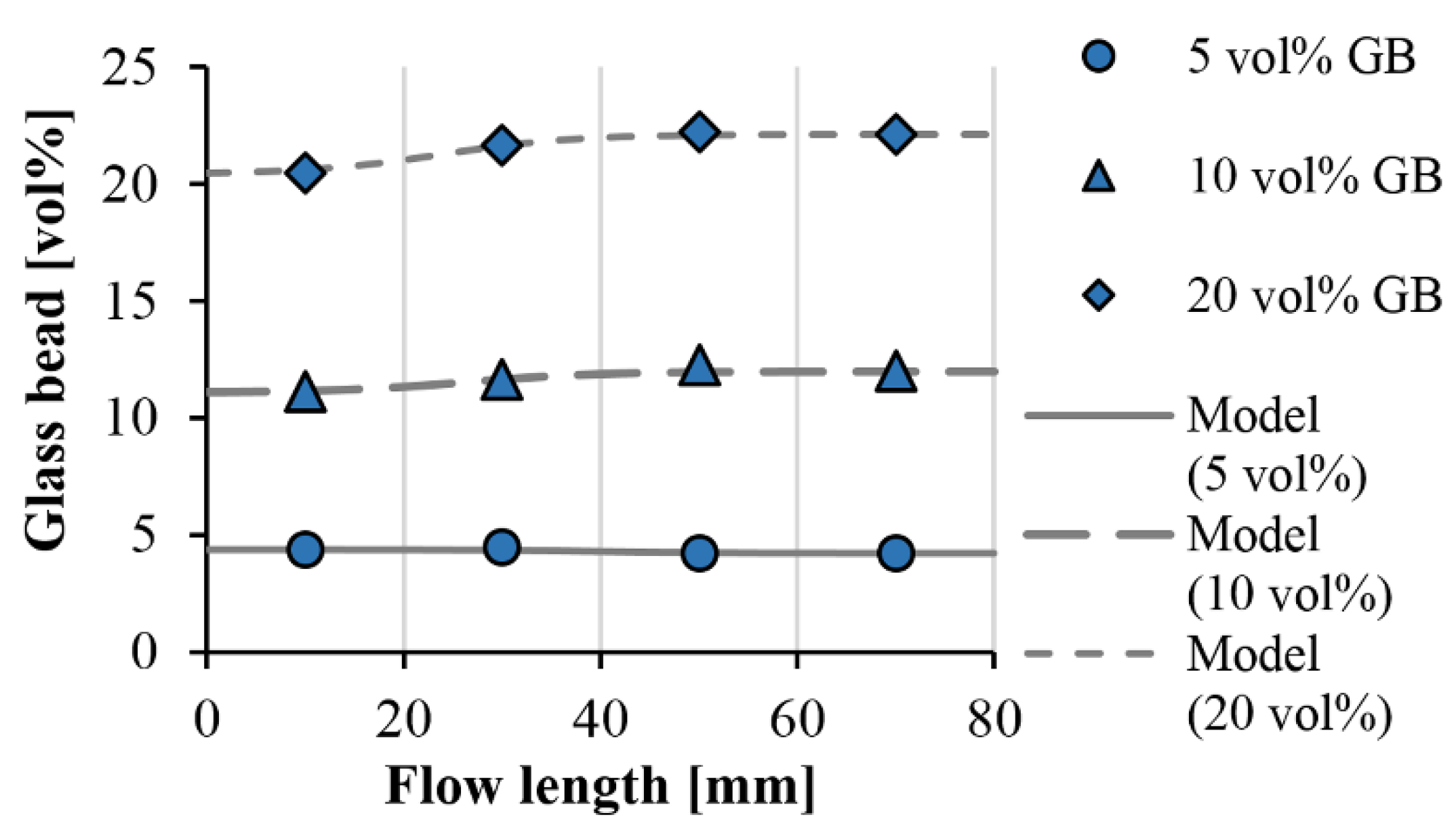

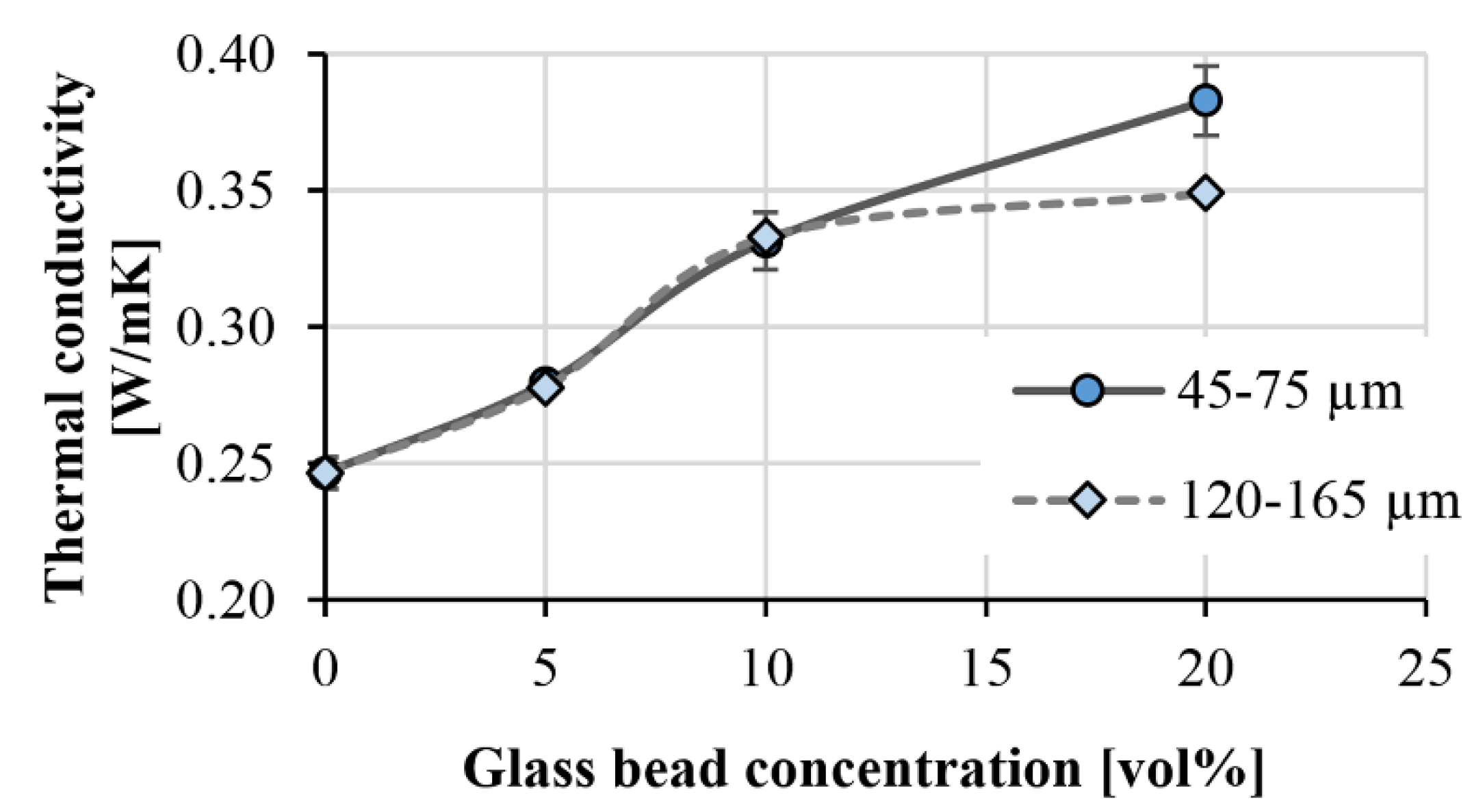

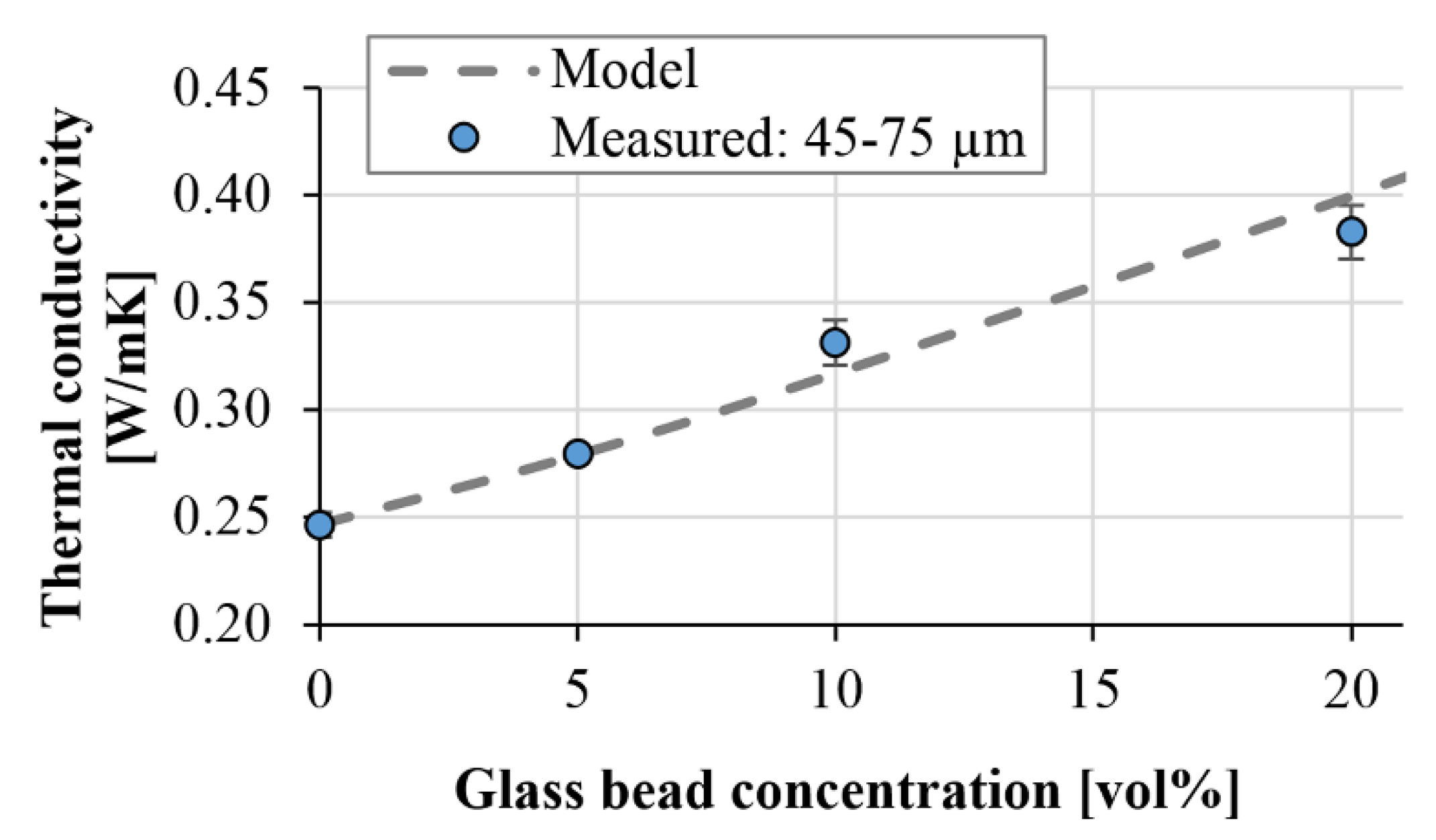

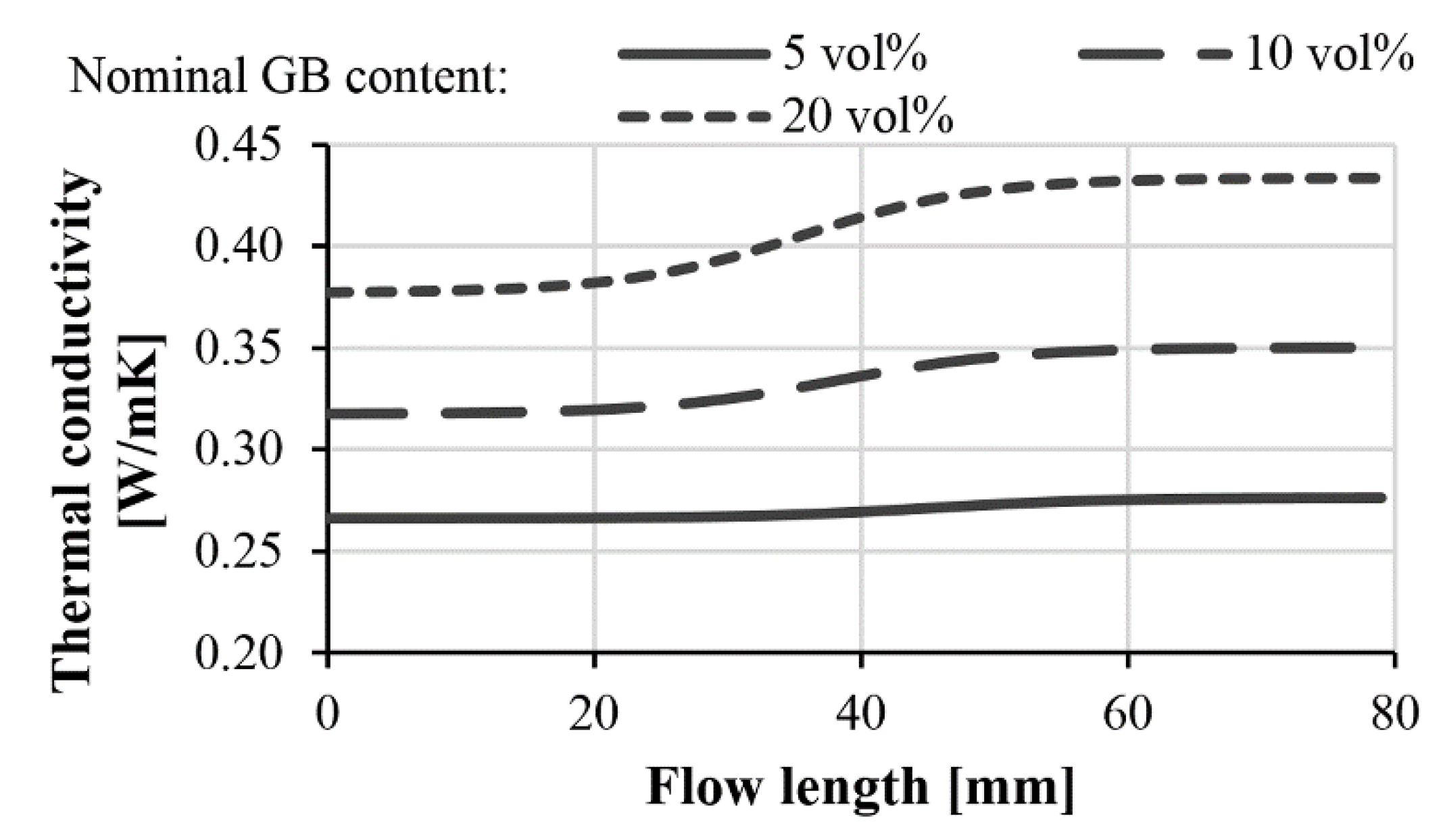
| Parameter | Unit | Value |
|---|---|---|
| Volume | [cm3] | 44 |
| Switch-over volume | [cm3] | 8 |
| Plasticizing speed | [m/min] | 20 |
| Injection rate | [cm3/s] | 80 |
| Holding pressure | [bar] | 350 |
| Clamping force | [tonne] | 70 |
| Cooling time | [s] | 25 |
| Zone temperatures | [°C] | 230; 225; 220; 215; 210 |
| Mold temperature | [°C] | 40 |
| Nominal Filler Concentration | Unit | 5 vol % | 10 vol % | 20 vol % |
|---|---|---|---|---|
| ϕ0 | [vol %] | 4.4 | 11.1 | 20.5 |
| ϕend | [vol %] | 4.2 | 12 | 22.1 |
| s | [1/mm] | 0.15 | 0.15 | 0.15 |
| li | [mm] | 40 | 26.6 | 24 |
| RMSE | [vol %] | 0.05 | 0.15 | 0.12 |
| Nominal Filler Concentration | Unit | 5 vol % | 10 vol % | 20 vol % |
|---|---|---|---|---|
| ϕ0 | [vol %] | 3.2 | 10 | 17.3 |
| ϕend | [vol %] | 4.6 | 14.1 | 23.9 |
| s | [1/mm] | 0.15 | 0.15 | 0.15 |
| li | [mm] | 45 | 38 | 35.5 |
| RMSE | [vol %] | 0.02 | 0.04 | 0.4 |
© 2019 by the authors. Licensee MDPI, Basel, Switzerland. This article is an open access article distributed under the terms and conditions of the Creative Commons Attribution (CC BY) license (http://creativecommons.org/licenses/by/4.0/).
Share and Cite
Suplicz, A.; Semperger, O.V.; Kovács, J.G. Modeling the Thermal Conductivity Inhomogeneities of Injection-Molded Particle-Filled Composites, Caused by Segregation. Polymers 2019, 11, 1691. https://doi.org/10.3390/polym11101691
Suplicz A, Semperger OV, Kovács JG. Modeling the Thermal Conductivity Inhomogeneities of Injection-Molded Particle-Filled Composites, Caused by Segregation. Polymers. 2019; 11(10):1691. https://doi.org/10.3390/polym11101691
Chicago/Turabian StyleSuplicz, András, Orsolya Viktória Semperger, and József Gábor Kovács. 2019. "Modeling the Thermal Conductivity Inhomogeneities of Injection-Molded Particle-Filled Composites, Caused by Segregation" Polymers 11, no. 10: 1691. https://doi.org/10.3390/polym11101691
APA StyleSuplicz, A., Semperger, O. V., & Kovács, J. G. (2019). Modeling the Thermal Conductivity Inhomogeneities of Injection-Molded Particle-Filled Composites, Caused by Segregation. Polymers, 11(10), 1691. https://doi.org/10.3390/polym11101691







